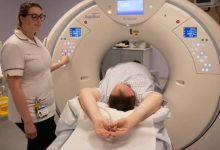How much do Orthodontist make?
Contents
What is an orthodontist?
An orthodontist is a dental specialist who straightens teeth and corrects jaw problems. Orthodontists are the only dental professionals who can call themselves orthodontists, so be sure to double check any other dentist you’re considering seeing that they’re truly qualified before going in for treatment.
To become an orthodontist, a person must first earn a bachelor’s degree from an accredited college or university. They then have to complete four years of dental school, earning either a doctorate of dental surgery (DDS) or doctorate of medicine (MD). The final step is completing two to three years of graduate training in orthodontics at an accredited program, which allows them to practice as an orthodontist.
Orthodontists use braces and other appliances to straighten teeth and fix jaw problems.
Is it worth being an orthodontist?
Becoming an orthodontist requires a lot of work, but that tends to be the case for every upper-level medical professional. It involves getting into dental school, which is difficult and expensive, and then completing a two or three-year residency program after you’ve earned your dental degree. This can cost upwards of $100,000 in tuition alone. After all this (and before they can even practice), aspiring orthodontists must pass a licensure exam.
While there are some unique challenges involved with becoming an orthodontist, this career path is also very rewarding if it’s what you love to do. You get to help people feel more confident in their smiles and improve their oral health, which prevents other medical problems down the road!
Related Post:How to Study for Law School Exams
How much does an orthodontist make?
Orthodontists can earn anywhere between $100,000 and over $300,000. The exact amount depends on the orthodontist’s location, experience and qualifications. In general, orthodontists in the United States earn more than those working in other countries.
Other factors that influence how much an orthodontist makes include whether they work for a private practice or are self-employed. Orthodontists who have owned their practices for a long time typically earn more due to repeat business from loyal customers. Those who work for a dental hospital also tend to make more money than other orthodontists due to high demand for their services.
Orthodontists are highly paid, but it takes a lot of work to become one.
According to the US Bureau of Labor Statistics, the average orthodontist salary in the United States is $237,070. This is also more than what dentists earn overall, which stands at $159,200 per year. While this may seem like a lot of money, it’s about average for what most doctors make. However, it’s much higher than the median income for most people in the United States and other developed countries such as England or Australia.
However, keep in mind that anyone who wants to become an orthodontist has to go through extensive education and training before they can earn that big paycheck. Finally becoming an orthodontist means years of school and plenty of hard work!
Steps you should take to become an orthodontist
A degree in dentistry or orthodontics from an accredited university is a must if you wish to become an orthodontist.
Some higher learning institutions offer programs that are better than others. You should find out which universities offer the best degrees so you can make an educated decision about where to go for your orthodontic degree. While this is not a requirement to become an orthodontist, it will definitely help you in getting a good job if you have a degree from one of these top-notch schools.
You should have a Bachelor’s degree before applying for your DDS, DMD or BDS degree.
You should have a bachelor’s degree before applying for your DDS, DMD or BDS degree. Your undergraduate program can be in any subject, but you will definitely need a bachelor’s degree to get into dental school. If you are planning to apply for residency after graduation, then you should choose your major carefully because some programs have specific prerequisites. You should also speak with an academic advisor if you want to apply for medical school after completing your DDS, DMD or BDS degree.”
You will then have to practice for a few years as a dentist before applying for the post of an orthodontist.
To become an orthodontist, you need to complete a post-graduate degree in orthodontics. After you are done with the first three years of undergraduate studies, you will have to apply for a dental school. You will then have to practice for a few years as a dentist before applying for the post of an orthodontist. The course will last for another two or three more years and after completing it, you can become an orthodontist. It is important that you gain experience from other licensed orthodontists during these two to three years. Besides this, it is also important that you learn from the experienced staff and learn about the basics of orthodontics.
You will then have to take and pass your licensing exam.
While the process of becoming an orthodontist is long and difficult, it’s not over after you receive your degree. In fact, that’s when the journey becomes even more challenging. You will then have to take and pass your licensing exam in order to practice as a dentist. The license required for practicing as a dentist is issued by each state and administered through the American Dental Association (ADA). This test is known as the National Board Dental Examination (NBDE) Part II and is incredibly difficult to pass. The test takes two days, with day one covering general dentistry and day two focusing on orthodontics. However, this exam isn’t just about teeth—it also covers medical conditions like diabetes that can impact how you treat your patients. While some states don’t require passing this test before being licensed, most do and since it’s so hard to pass, orthodontists are encouraged to take it before they go into practice in case they fail it the first time around.
If you want to become an orthodontist, make sure you get a proper education and get licensed by the government.
If you want to become an orthodontist, then make sure you get the proper education and get licensed by the government. You need to have a law degree or a medical training if you wish to pursue becoming an orthodontist.
You also need to know that in some countries, such as India, there is no official board or organization that licenses orthodontic doctors. In the United States, it is important for you to be licensed so that you can practice in your country.
History of Orthodontics
Frenchman Edouard Angle (1855 – 1930) was responsible for establishing orthodontics as a specialty.
In the 19th century, Frenchman Edouard Angle (1855 – 1930) was responsible for establishing orthodontics as a specialty.
He was the first person to use X-rays to study the teeth of children, and he was also the first to use plaster casts to study the teeth and jaws. He created what is still today called “Angle’s classification” of malocclusion, which established three types of occlusions: Class I (normal), Class II (prognathism or retrognathism), and Class III (retrognathism).
It wasn’t long before Angle started experimenting with devices that would move teeth into place in order to improve their alignment.
Orthodontists had used headgear to correct overbites and underbites ever since the 1960s, but they weren’t always effective or worn often enough to work.
Unfortunately, headgear had a reputation for being uncomfortable, embarrassing, and hard to use. Sometimes patients didn’t wear the headgear as prescribed or at all, which made the treatment ineffective. People complained of headaches and neck pain from wearing it. Patients sometimes lost or broke their headgear. Because of these issues, orthodontists began looking for alternatives to traditional headgear in the 1960s.
In 1978, Martin Dewey published his book Orthodontic Treatment of the Dentition with Preadjusted Appliances, which introduced the world to a new concept in orthodontic treatment.
In 1978, Martin Dewey published his book Orthodontic Treatment of the Dentition with Preadjusted Appliances, which introduced the world to a new concept in orthodontic treatment. What was this revolutionary idea? The preadjusted appliance. Before Dewey’s work, customizing orthodontic braces for each individual patient was done by adjusting the wires and brackets on the appliances after they had been fitted to teeth. If a bracket wasn’t placed in exactly the right place, then it wouldn’t be possible to move that tooth as desired until a new bracket could be soldered on at just the right angle and position. With only pliers as their tools, orthodontists were forced to craft each bracket individually and bend them into shape for each patient. This was time-consuming work that left little room for error and required great skill on the part of the practitioner. With his preadjusted appliance technique, however, Dewey simplified this process dramatically.
Related Post:Parsons Acceptance Rate: Tuition, Requirements and Admissions
In 2001, the FDA approved a laser device that could reshape gum tissue without cutting or stitching.
In 2001, the FDA approved a laser device that could reshape gum tissue without cutting or stitching. Called the Laser Assisted New Attachment Procedure (LANAP), it was programmed to remove diseased gum tissue while leaving healthy tissue intact. It can also be used to sterilize teeth, killing bacteria and preventing infection, as well as stimulate the growth of new gum tissue. In 2005, LANAP was extended to Canada. As of 2008, over 100 dentists have been trained in this procedure.
The Damon System was introduced in 2004 and was designed to eliminate some of the discomfort associated with wearing braces.
The Damon System was introduced in 2004 and was designed to eliminate some of the discomfort associated with wearing braces. It also aligns teeth faster than traditional braces. The Damon System uses lighter wires and lower forces than conventional braces. This allows for more natural tooth movement, which is often more comfortable than conventional braces. In addition, the Damon System can often be used without extractions (removing permanent teeth).
Orthodontics has undergone many improvements throughout history, and continues that tradition today.
Orthodontics is a branch of dentistry that focuses on the correction of bad bites and the alignment of teeth. Bad bites can cause a variety of health problems, including tooth decay, gum disease, and even heart disease. If you want to fix bad bites and keep people healthy, it’s time to learn more about the history of orthodontics. The future of orthodontics is growing day by day.
Orthodontic practices have changed quite a bit over the years. Today’s orthodontists rely on technology such as dental braces and clear aligners rather than primitive solutions like molds and wires. But despite these advances, there are still many things that today’s orthodontists can learn from their predecessors in order to make their practices as effective as possible for patients with crooked teeth or misaligned jaws.
Related Post:UCSF Acceptance Rate: Admissions and Tuition









